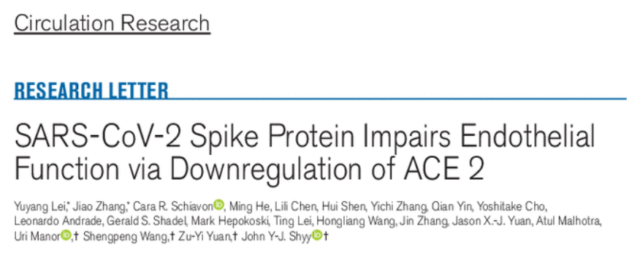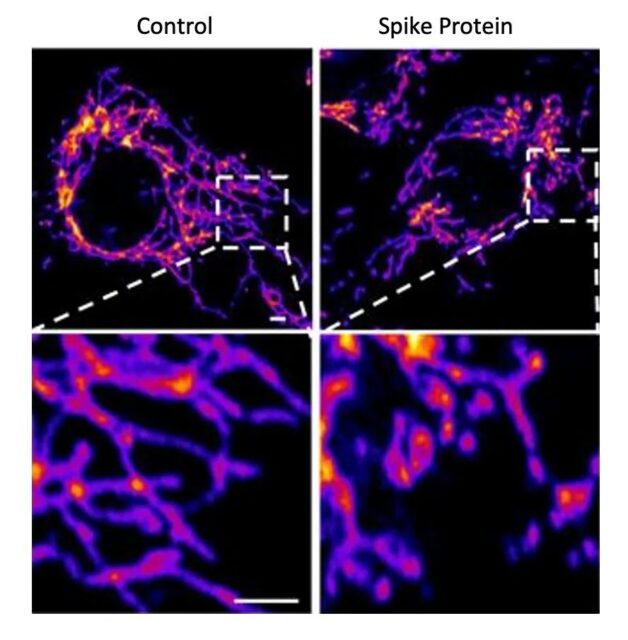Coronavirus pneumonia is actually a vascular disease?
- Normal Liver Cells Found to Promote Cancer Metastasis to the Liver
- Nearly 80% Complete Remission: Breakthrough in ADC Anti-Tumor Treatment
- Vaccination Against Common Diseases May Prevent Dementia!
- New Alzheimer’s Disease (AD) Diagnosis and Staging Criteria
- Breakthrough in Alzheimer’s Disease: New Nasal Spray Halts Cognitive Decline by Targeting Toxic Protein
- Can the Tap Water at the Paris Olympics be Drunk Directly?
Coronavirus pneumonia is actually a vascular disease? not a respiratory disease?
Coronavirus pneumonia is actually a vascular disease? The research team also stated that it hopes to further study the mechanism by which the damaged ACE2 protein causes mitochondrial damage and deformation.
At the beginning of the outbreak of the new coronavirus, scientists quickly determined that the new coronavirus (SARS-CoV-2) binds to the ACE2 protein on the surface of human cells through its spike protein (S protein) to enter cells and cause infection.
The new coronavirus is often infected through the respiratory system, so it is considered by many to be a respiratory disease, but is it really the case?
On April 30, 2021, a research team led by Yuan Zuyi, the First Affiliated Hospital of Xi’an Jiaotong University, and John YJ. Shyy of the University of California, San Diego, and others published a titled “SARS-CoV-2 Spike Protein Impairs Endothelial” in the journal Circulation Research. Function via Downregulation of ACE 2″ research paper.
The study showed that the spike protein (S protein) of the new coronavirus not only helps it invade cells, but also damages endothelial function by down-regulating ACE2. This is the first time that the spike protein (S protein) alone is sufficient to cause disease.
This study also shows that COVID-19 is actually a vascular disease, which accurately proves how the SARS-CoV-2 virus damages and attacks the vascular system at the cellular level.
These findings help explain the various seemingly unrelated complications of COVID-19 and may open the door to the development of more effective treatments.

The research team said that many people think that COVID-19 is a respiratory disease, but it is actually a vascular disease. This also explains why some patients have strokes and why some people have problems in other parts of the body. The commonality between them is that they all have a vascular basis.
Previously, many studies have begun to believe that the new coronavirus will affect the vascular system, but the specific mode of action is still unclear. Similarly, scientists studying the new coronavirus also suspect that the new coronavirus
Spike protein (S protein) can damage vascular endothelial cells. This study provides clear evidence and reveals in detail the mechanism by which the spike protein (S protein) damages the vascular system.
In this study, the researchers first constructed a new coronavirus pseudovirus, which is surrounded by the new coronavirus spike protein (S protein), but does not contain any actual new coronavirus. The lungs and arteries of animal models infected with this pseudovirus showed that only the spike protein (S protein) was enough to cause disease. Tests of tissue samples showed inflammation of the endothelial cells in the inner lining of the pulmonary artery wall.
Then, the research team repeated this process in the laboratory, exposing healthy endothelial cells to the spike protein (S protein), and the results showed that the spike protein (S protein) caused damage to the cell by binding to the ACE2 protein. This combination disrupts the molecular signal transduction between ACE2 and mitochondria, resulting in damage and fragmentation of mitochondria.

Vascular endothelial cells (left) and vascular endothelial cells treated with S protein (right). S protein causes increased mitochondrial fragments in vascular cells
Previous studies have found that cells have a similar effect when exposed to the new coronavirus, but this study confirmed for the first time that similar damage occurs when cells are only exposed to the spike protein (S protein).
The research team said that even if the replication ability of the new coronavirus is removed, the ability of its spike protein (S protein) to bind to the ACE2 receptor alone is sufficient to cause major damage to vascular cells. Further research on the spike protein (S protein) of the new coronavirus mutant will also provide new insights into the infectivity and severity of the new coronavirus mutant.
In addition, the research team also stated that it hopes to further study the mechanism by which the damaged ACE2 protein causes mitochondrial damage and deformation.
(source:internet, reference only)
Disclaimer of medicaltrend.org



